Peter Vronsky
ART
Peter Vronsky (Peter Wronski)
created numerous formal
art works consisting of sculptural video installations and video-art
tapes. His works were exhibited both in Canada and internationally.
In 1983, Vronsky was appointed Artist-In-Residence at Sony Corporation. There,
in their Video/Culture program, he experimented with Sony's prototype high-end
effects systems, high definition video, computer graphics, and interactive laser
discs.
Some of the many venues in which Vronsky exhibited are:
Flavio Belli Gallery,
Toronto
Aspace, Toronto
Rivoli, Toronto
Ontario Art Gallery (Group Show)
Canada House Gallery, London UK
Video Roma, Rome
White Water Gallery, North Bay, Ontario
Toxic-Plan 9, Toronto
The Kitchen, New York
Georges Pompidou Art Museum (Group Show), Paris
Video-Video, Toronto International Film Festival
Niagra Artist Co-Operative, St. Chatherines, Ontario
Video/Culture International, Tokyo
World Wide Video Festival, Amsterdam
Plug-In Gallery, Winnipeg
Canadian author and art critic John Bentley Mays writes that Vronsky's art "manages to slam us into a confrontation with our boredom and hunger for
distraction, and with our need for the world to remain violent and interesting."
(Globe & Mail, January
22, 1982)
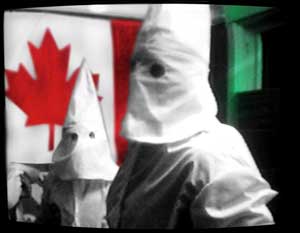
REICHLAND KANADA
55 minutes - video - 1980
Vronsky's emergence as a video artist was the result of a network television project gone horribly wrong: a 1980-81 undercover assignment to film inside KKK activities in Toronto. Vronsky assembled video material never broadcast, producing a videotape entitled REICHLAND which was shown in parallel art galleries and video festivals across Canada and Europe.
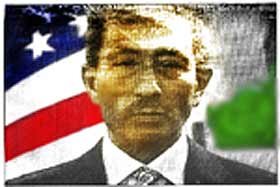
EGYPTIAN TELEVISION FILM
40 minutes - video - 1981
Taping live unedited
satellite feeds during the day from the scene of Egyptian President Sadat's
assassination in Cairo in October 1981, Wronski tracked them to their eventual
"packaging" in the evening network news programs later that same
day.
The Toronto
Star said of the work:
"Everyone who works for
TV news should see the brilliantly edited installation and discover how clichéd
and comical all the major newscasters of our time really seem when portrayed
in this wickedly witty and manipulative manner."
(Toronto Star - January 16, 1982)
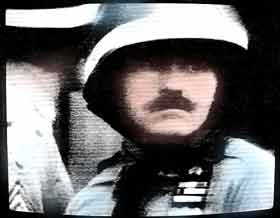
IT'S ONLY A CITY, DARLING, THEY CALL NEW YORK
45 minutes - video - 1982
During massive anti-nuclear demonstrations in New York City in June 1982, Vronsky followed and videotaped TV news crews at work on the streets of the city and then taped their network edited footage as it was broadcast hours later. The combination of Vronsky's unedited footage and the edited network footage of the same events show that while it is true, the camera never lies, the pictures it takes, often do.
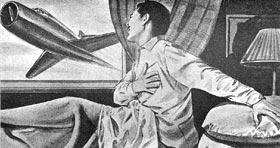
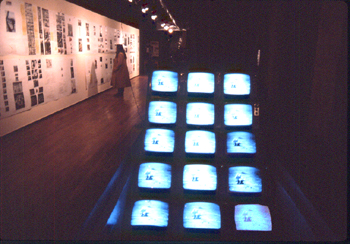
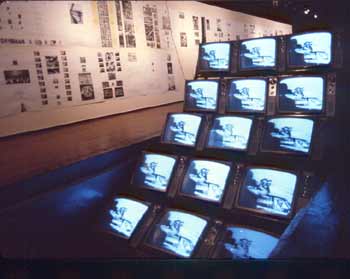
Egyptian
Television Film
Flavio Belli
Gallery, Toronto
January-February 1982
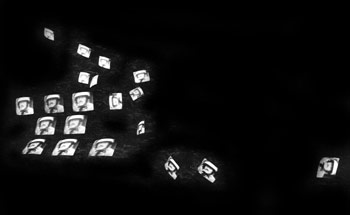
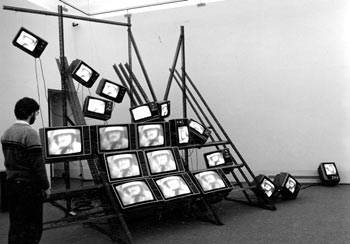
It's Only A City, Darling, They Call New York
British/Canadian Video Exchange'84
Canada House Gallery, London
March 1984
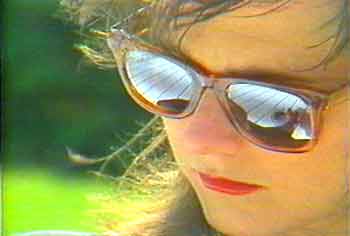
WAR CAN BE LIKE THIS
30 minutes - video - 1983
A chance encounter with a group of Vietnam war veterans lobbying the American Psychiatric Association during the annual convention in a Toronto hotel, led to the making of this video. The veterans were seeking the psychiatrists' recognition of PTSD -- Post Traumatic Stress Syndrome or "Flashback Syndrome" as a certified psychiatric disorder. Vronsky's video was one of the first to describe what was then mostly an unknown disorder. The video documents the unique circumstances leading to the development of PTSD among some former Vietnam War combatants and visualizes what a PTSD episode might feel like for the sufferer.
WAR CAN BE LIKE THIS is described by
Vronsky as
"television art" as opposed to video art. His position was
representative of divisions in the video art community at the time between those who
believed that video art should remain a formal art form for gallery viewing with
academic critical criteria and those artists who believed that video art can
be popular and broadcast on television to wider audiences and should not be necessarily
limited by formal art criteria.
Vronsky's willingness to broadcast his art and work with Sony Corporation led to
his being accused of "selling out" to which he would respond with
a slogan coined by Canadian art group General Idea: "You
cannot sell out until you are out of stock."
An extract from WAR CAN BE LIKE THIS can be viewed
by clicking on the links below.
RealVideo 56k modem
![]()
RealVideo Broadband
![]()
The issue of "television art" has over the
decades become a mute one in the face of extraordinary corporate centralization
of the television industry during the 1990's. The ability to stream video
on the Internet has also opened a new mass-medium system for artists to netcast
their works in a way not possible in previous decades.
In the second half of the 1980's, Vronsky returned to television, first working
in the Rome Bureau of CNN, and later producing his own documentaries on art and
culture in the collapsing USSR.